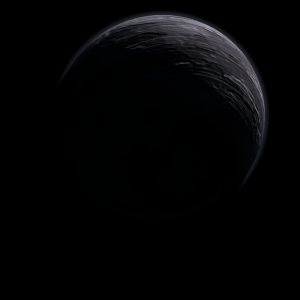|
|
Space Astro
|
Info for exoplanet "Uqcisco"
| Scientific (actual) data |
|---|
| Name | HD 155358 c |
| Planet status | Confirmed |
| Mass sini | 0.82 |
| Orbital period | 391.9 |
| Semi major axis | 1.02 |
| Orbit eccentricity | 0.16 |
| Angular distance | 0.023721 |
| Discovered | 2007 |
| Updated | 2012-02-03 |
| Omega | 180 |
| Tperi | 2455350 |
| Publication | Published in a refereed paper |
| Detection type | Radial Velocity |
| Star name | HD 155358 |
| Right ascension | 257.4° |
| Declination | 33.36° |
| Mag v | 7.27 |
| Star distance | 43 |
| Star metallicity | -0.51 |
| Star mass | 0.92 |
| Star sp type | G0 |
| Star age | 10.7 |
| Star temperature | 5900 |
| Wikipedia article | HD 155358 c |
Back
| |
| Fictional info (?) |
|---|
| Suggested name | Uqcisco |
| Planet type | Cold planet |
| It may have had carbon dioxide oceans in the past, but these would have vaporized as the temperature rose due to a runaway greenhouse effect. |
| Atmosphere | Neon | 37% |
| Carbonyl sulfide | 32% |
| Carbon dioxide | 14% |
| Sulfur dioxide | 7.4% |
| Helium | 7.4% |
| Hydrogen chloride | 1% |
| Atmospheric pressure | 70 bar |
 |
| No known satellites |
| Google search for Uqcisco |
|
Website by Joachim Michaelis
|
|
|
|